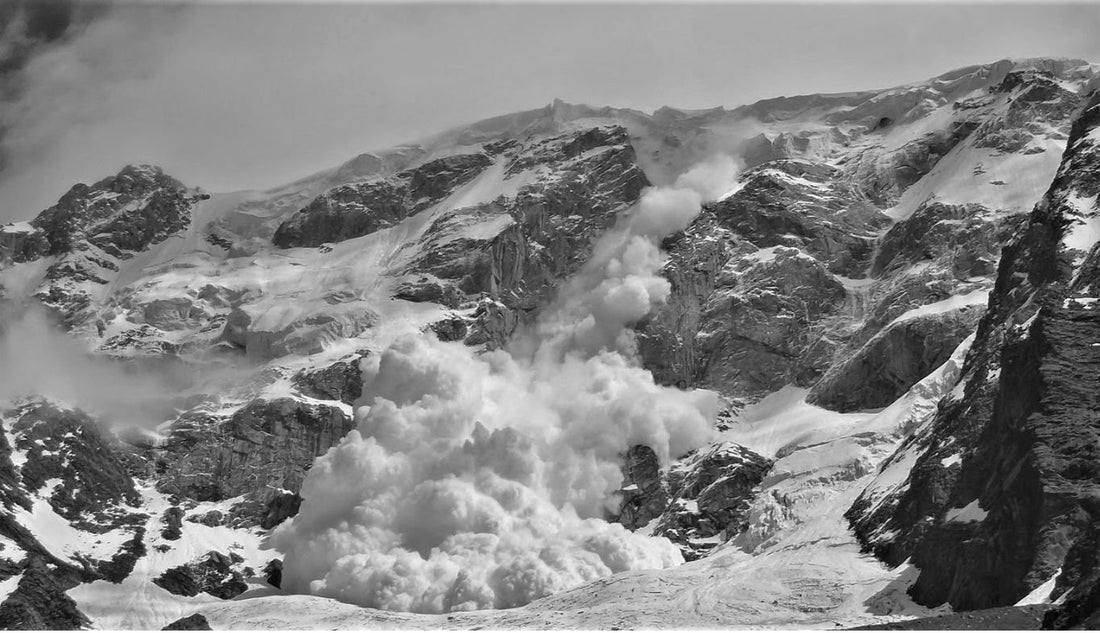The Kullu Valley and Lahaul, nestled within the Himalayas, are a playground for ski enthusiasts seeking thrilling descents and mesmerizing alpine vistas. Yet, amid this natural splendor, there exists a silent, formidable adversary - avalanches. Understanding snow stability is paramount for those venturing into these breathtaking but perilous landscapes.
The Continental Challenge
The region experiences a continental climate, with its closest oceanic influence over 1200 km away. The weather pattern here is characterized by the swift succession of high-pressure ridges followed by fast-moving, low-pressure troughs. Such meteorological dynamics often result in a shallow snowpack with a pronounced temperature gradient. This setup can lead to the persistence of weak layers buried deep within the snowpack, making avalanche risk a constant concern.
In Lahaul, a neighboring region to Kullu, that shares the Himalayan grandeur with Kullu Valley, a similar climate prevails. It, too, faces the challenges of snow stability. Lahaul's unique topography and climate present their own complexities when it comes to assessing avalanche risk.
Assessing Snow Stability: A Daunting Task
Evaluating snow stability in both Kullu Valley and Lahaul is a daunting and vital process. Ski tourers must rely on their own observations and assessments to make informed decisions about where and when to ski. Unlike ski resorts with controlled conditions, venturing into these wild terrains demands a heightened sense of vigilance.

Depth Hoar Dilemma
One of the primary concerns in snowpack analysis is depth hoar, which comprises faceted snow near the ground level. In both regions, depth hoar is a leading cause of human-triggered avalanches. These problematic layers are often found in areas with thin snow cover, especially windblown aspects. Conditions tend to be more stable in areas with a deep snowpack, such as the Rohtang Pass. Furthermore, the stability of the snowpack improves during warmer periods, like spring when the snowpack exhibits a more uniform temperature gradient.
However, it is essential to note that the snowpack's stability can vary significantly from one slope to another. The Himalayan terrain, with its massive relief, accentuates this variation. While detailed snowpack analysis is critical for suspect slopes, ski tourers must also heavily rely on terrain selection and safe skiing techniques.
The Role of Terrain and Experience
Stability tests remain a valuable tool for assessing avalanche risk, and several methods can be employed, including cornice drops, rutschblock tests, compression tests, and even jumping on test slopes. However, these tests may provide insights for only a small section of a vast ski run.
The ski tourer's "feel" for snow stability is highly esteemed in this environment. Factors such as slope steepness, wind and sun exposure, recent snowfall, the presence of vegetation, and signs of previous avalanches all contribute critical information. These observations help guide decisions about which slopes are safe to descend and which should be approached with caution.

The Avalanche Epicenter
The Himalayas are home to some of the largest and most frequent avalanches in the world. Massive avalanche paths, some resembling glaciers, stretch for kilometers through valleys. Evidence of grade 4 and 5 avalanches is not uncommon, painting a clear picture of the region's high avalanche activity.
Tragically, the area has witnessed numerous avalanche fatalities, including those of experienced heli-skiing guides. The entire region is a high avalanche zone, a fact that becomes evident upon witnessing the regularity and enormity of avalanches.
Factors Fueling Avalanches
The Kullu and Lahaul regions exhibit all the necessary factors contributing to snow instability. Steep slopes between 35° to 45° degrees are abundant. Variability in snow and weather conditions, with periods of heavy cold powder followed by warm, sunny weather, is common. Wind loading is widespread, and the alpine region lacks sufficient vegetation to anchor the snowpack. Mid-winter snowpacks often feature multiple weakly bonded layers with a moderate to strong temperature gradient. In such conditions, any snowfall can trigger avalanches.
Fortunately, most avalanches, about four out of five, occur during or just after a storm. Therefore, ski touring during such periods can be judiciously avoided. Nevertheless, avalanches remain a formidable threat during the spring months, and only experienced and competent individuals should consider ski touring in these regions.
In Conclusion
Navigating the snow stability of Kullu Valley and Lahaul demands a combination of scientific understanding, practical experience, and an innate connection with the environment. These regions, while offering awe-inspiring skiing opportunities, also pose formidable challenges. Ski tourers must approach each descent with careful consideration, relying on their expertise and a deep respect for the unpredictable forces of nature that shape these captivating landscapes.

